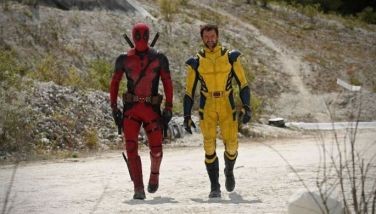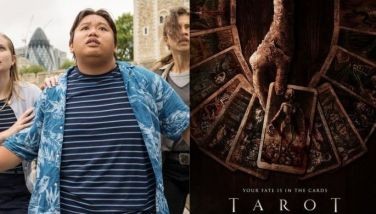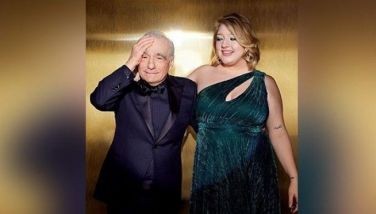What was that all about? Kyoto Inferno, and the Pinoy love for Rurouni Kenshin
The release of Rurouni Kenshin: Kyoto Inferno last week was about as big a deal as the well-attended premiere, wherein the stars of the Japanese film actually flew in to Manila and met hordes of fans. For someone unfamiliar with the series, it must seem puzzling. Kyoto Inferno is actually a sequel, and part two of a trilogy — the first film, Rurouni Kenshin, had a rather limited release in 2012 and selective fanfare. Now we see that the premiere was attended by hordes of screaming fans who didn’t even wait for the translator to convey what the Japanese stars were saying before loudly cheering, and moviegoers committing to a chapter that is almost three hours long. What gives?
From the perspective of a Pinoy fan, it’s so blatantly obvious it’s a given, but for the uninitiated, here is a bit to chew on: the series was an anime mainstay on TV in the late 90s, and with three seasons of about 95 episodes, plus two OVAs (“Original Video Animation”, the rough anime equivalent of a television movie, sometimes in several episodes), meaning it was around. For a while. If you were growing up in that time and had access to either AXN or Studio 23, you’ve probably seen it. And if you’re like me, and the show’s timeslot coincided with the exact hour after school that I was allowed to watch TV, then you probably know all the stories by heart.
The series followed a former samurai assassin named Kenshin, who in the wake of the Meiji era vows to never kill again. The original full title in its first incarnation, manga (Japanese comics), is actually Rurouni Kenshin Meiji Kenkaku Romantan, which would roughly translate to “Wanderer Kenshin: Meiji Swordsman Romantic Story.” The title is often shortened to just Rurouni Kenshin, but is, depending on the region, more popularly known as Samurai X.
It was, if you were able to get into the zany (sometimes jarring) style that was 90s anime, a great piece of historical fiction. The show had amazing technical action and a good balance between lighthearted comedy and compelling human drama. If you were a kid at the height of this show’s popularity, you were probably watching it because it talked about many things that western animated shows would not — bloodshed and the cost of war, for example. But for a show well populated with samurai and warrior assassins, it effectively explored themes like redemption, the motivating power of love, and the value of human life.
Kenshin’s vow is often tested, when his reputation as the famed assassin of the previous era often draws out old foes into the new one, and he has to protect the people around him, the most beloved of which form Kenshin’s newfound family: Kaoru, the orphaned heir to a swordsmanship dojo that becomes their home; Sanosuke, a street fighter who was nurtured by politically extreme militants in the previous era; Yahiko, the last son of a samurai family all but eliminated and heavily in debt; Megumi, a beautiful doctor forced into the opium trade.
All of these characters, and more, were brought to life in 2012’s Rurouni Kenshin, directed by Keishi Otomo. And fans were thrilled to see how well made the adaptation was. Visually, it offered a kind of stylized, fantastic treatment of the historical, akin to something like 300, but with Japanese sensibilities that really draw out the best of its setting. Story-wise, it incorporated all the major points of the first part of the series, introducing the characters so well it really felt like they just stepped out of the animated frames. It’s not something that always works in adaptations, being too much like the source material, but in Rurouni Kenshin there is a deft handling that steadies it and keeps it upright.
(When the film was first announced there was a kind of cautious optimism in those who were paying attention. The series had a wealth of material with which to create a great film, but a lot of complexities with which to make a bad one. There was also the spotty adaptation history of anime in general. There have been a few anime adaptations by big [foreign] studios in the past, with mediocre-to-terrible results. I won’t drop any names, but I will say that the main problem with the worst of those films was definitely the insistence that they could simply take the material and run into the west with it [which is classic Hollywood modus operandi, I suppose], with hilariously bad results that left no one happy. With Rurouni Kenshin we finally have a big studio trusting a Japanese production — and the trust is well-rewarded.)
In short, the big deal is this: it’s a series with a following, and a live-action trilogy catered to that following. Fans flocking to theatres to see Kyoto Inferno (also directed by Otomo) will have a lot to be delighted by — a huge amount of the series most famous story arc is featured, even minor storylines I would have predicted completely cut from the final edit. There is a great thrill in seeing what the filmmakers decided to depict and how they would depict it. There is one major duel Kenshin finds himself fighting in the series, wherein he is swordless and his opponent has several. It’s one of the best fights, and Kyoto Inferno makes sure to deliver.
All this still may not be enlightening, as far as the screaming hordes go — even the Japanese stars seemed bemused, though gratified, at the Manila premiere — but one way to look at it is to find its rough equivalent in the recent film adaptations of comic book superheroes in the west. Think Avengers, and so on. It’s not that there haven’t been any comic book film adaptations before, but we’re currently enjoying a time where studios are throwing out bigger budgets to make shiny, engaging, live-action films out of beloved print characters, with results that are enjoyable for all. The success of films like Iron Man and Captain America are due to a particular kind of dedication by a studio, with directors and cast members who find the right balance of being true to the source material and crafting their own story. What Rurouni Kenshin granted us back in 2012 was a glimpse at that possibility for adaptations of anime on the big screen that would be compelling even to people who aren’t into anime.
What Rurouni Kenshin: Kyoto Inferno gives us now is a veritable feast of a film. I could quibble about the most compelling points of the character development getting a little shortchanged by the pushing in so many character arcs at once, but apart from feeling a bit compressed there is so much to enjoy in the film you can help but make a personal event out of it. Its reception may appear somewhat cultish, but it is a hype well deserved. And while it does not have the worldwide following that film trilogies like the Dark Knight and Lord of the Rings enjoyed, we are one place where it is comparable. So I may not have joined the legions in loudly professing love at the film’s stars in thanks for making the movie, but I certainly look forward to the next one.
- Latest
- Trending


























